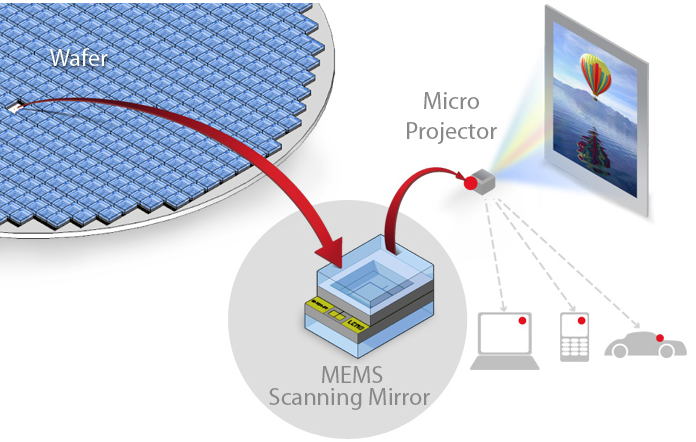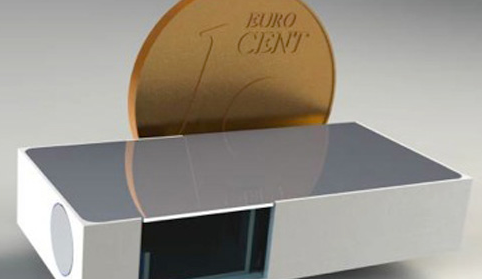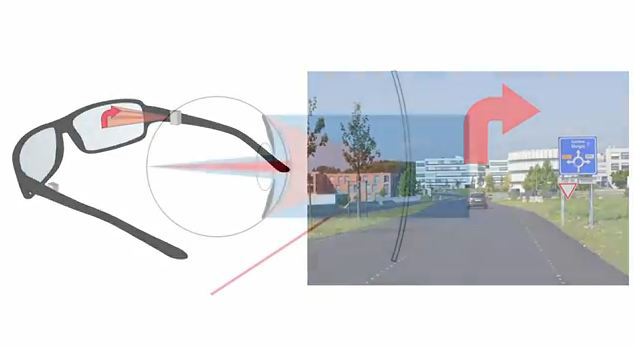Another augmented-reality glasses design emerges
October 1, 2012
EPFL scientists in the Laboratory of Photonic Devices are developing a prototype of a pair of augmented-reality glasses that are similar to Google Glass.
A mini-projector on the frames projects a holographic image on the lens.
One technical challenges is to allow the user to simultaneously see the information displayed on the lenses — which are too close to the eye for it to be able to focus naturally on it — as well as see their surroundings.
The researchers say they solved this problem by developing a specially designed contact lens with a micro-lens in its center that allows the eye to focus on the images.
“This technology has many advantages,” says EPFL professor Christophe Moser. “It provides high-definition, precise images. And unlike other models of the same kind, it conserves the entire field of vision and allows us to use existing eyeglasses design. It would be possible to make glasses that don’t require the use of contact lenses, but the high definition would be somewhat reduced.”
Holographic process

The miniaturized Lemoptix microprojection system is built around a MEMS (microelectromechanical system) scanning mirror platform and integrates the MEMS scanning mirror, control electronics, red-green-blue laser light sources, and beam combiner optics in a compact, plug-and-play package (credit: Lemoptix)
The Laboratory is working with EPFL start-up company Lemoptix, which specializes in miniaturized projection systems, to develop a high definition micro-projector that will blend discreetly into the right arm of the glasses. From this projector, images and information will be sent to the specially treated glasses lens via holography. This is a process in which the light scattered off of an object is recorded and then later reconstructed in 3D in the absence of the object.

“World’s smallest projector” (credit: Lemoptix)
In the case of augmented glasses, the hologram will be projected on the lenses in such a way that the image is reflected in the direction of the eye, while the lenses still appear transparent. So the user can still see through the glasses.
Before this invention can be commercialized, all these technologies must be refined, tested, and put together, which may take two and five years, says EPFL.
Plans for hang-gliding in to the future unveiling from the Swiss alps have not yet been announced. — Ed.
